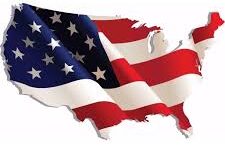Harpers Ferry National Historical Park preserves a beautiful landscape, which has played an important and sometimes surprising role in American history. Pressed with supporting the American Revolution, France first wanted to know why the young nation was worth defending. Tasked with convincing the French, Thomas Jefferson began composing a response. Writing what would ultimately become his only published book, Notes on the State of Virginia, Jefferson made an eloquent defense of America’s potential. One pillar of Jefferson’s argument was America’s natural beauty, and Harpers Ferry was put forth as a prime example. Commenting on the landscape, Jefferson wrote that Harpers Ferry was, “Worth a voyage across the Atlantic.” A wringing endorsement if I’ve ever heard one.
“The passage of the Potomac through the Blue Ridge is perhaps one of the most stupendous scenes in nature.”
Thomas Jefferson
https://www.nps.gov/hafe/index.htm

Located within a gap in the Blue Ridge Mountains, where the Potomac and Shenandoah rivers meet, Harpers Ferry is most certainly a scenic wonder. While Jefferson’s descriptions of the area were embellished, I can’t disagree with his assessment that Harpers Ferry is a “stupendous scene”. With it’s reputation as a natural wonder secured, Harpers Ferry quickly accumulated historical significance as well.
In 1794, President George Washington championed Harpers Ferry as the ideal site to construct a federal armory and arsenal. In 1803, Meriwether Lewis made the journey to Harpers Ferry, procuring weapons from the armory for the famed Lewis and Clark Expedition. Harpers Ferry also served as a transportation hub, with both the B&O Railroad and C&O Canal passing through the town. But perhaps the most famous historical event to take place at Harpers Ferry was the John Brown Raid.

On October 16, 1859, abolitionist John Brown launched a raid on the armory at Harpers Ferry. Brown hoped to seize the armory’s weapons and use them to start a mass uprising of enslaved people. Brown’s men initially overran the lightly guarded arsenal, but news of the raid spread, and reinforcements were on there way to Harpers Ferry. A company of U.S. Marines, led by the soon to be famous Robert E. Lee, arrived the next morning. The marines quickly captured Brown’s men, and the revolt was quickly brought to an end. John Brown was convicted of treason, and was executed on December 2, 1859. While the raid failed, it further inflamed tensions between the North and South, and played a role in the 1860 presidential election.

Possessing a rare combination of historical significance and natural beauty, Harpers Ferry makes for an excellent day trip. It’s also surprisingly accessible, located just an hour from Washington D.C. It’s impossible to tell, but I get the feeling that most people are completely unfamiliar with Harpers Ferry, which is a real shame. With so much to see and do, it’s got to be one of the more underrated units managed by the National Park System.

